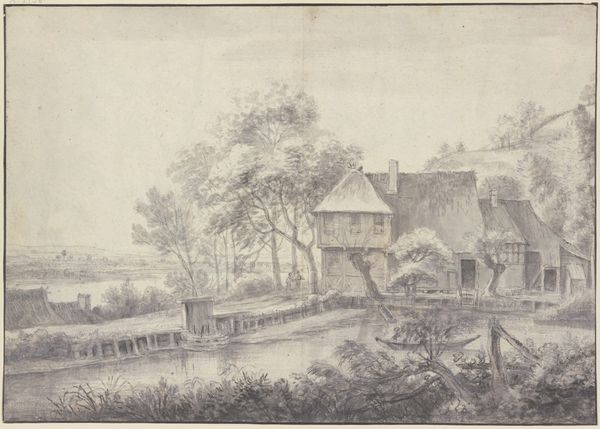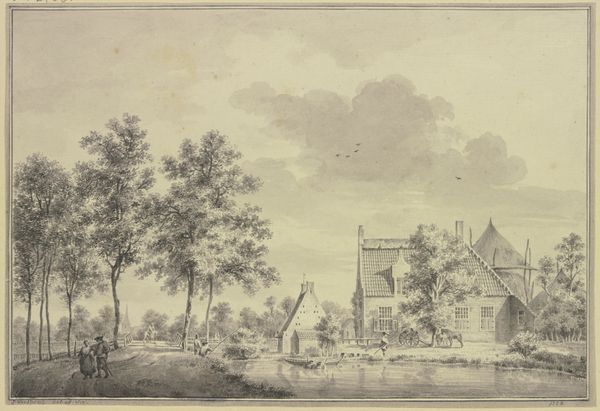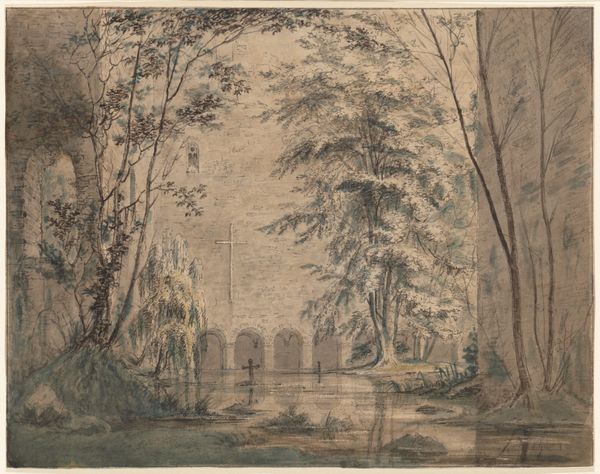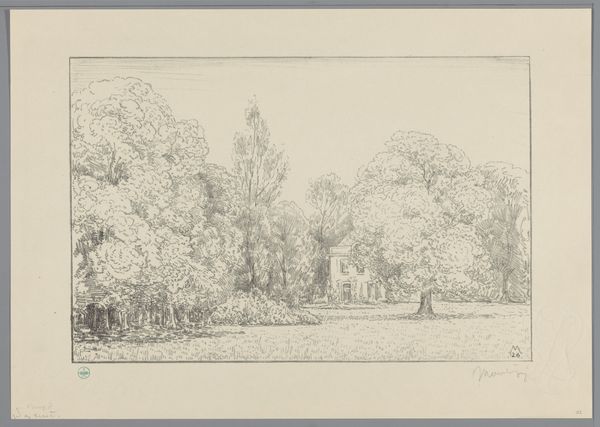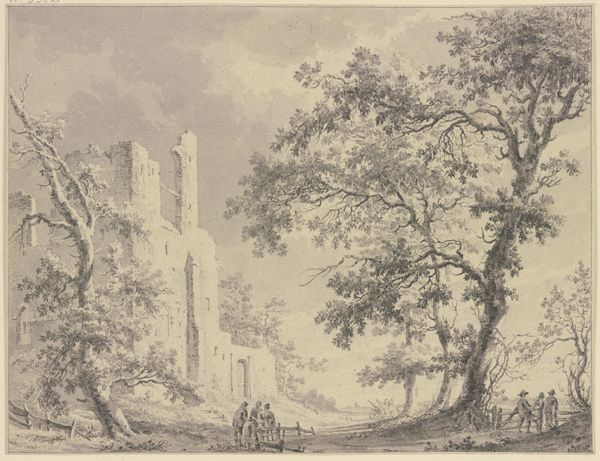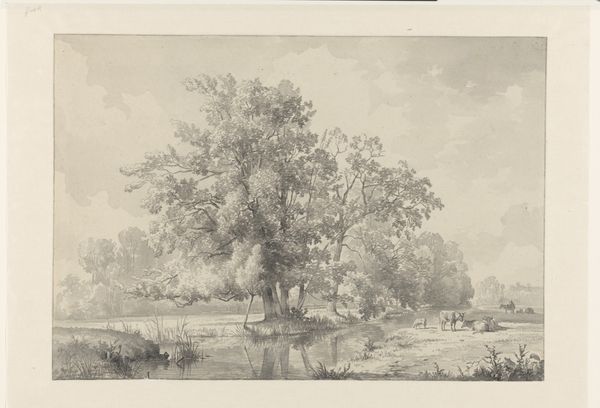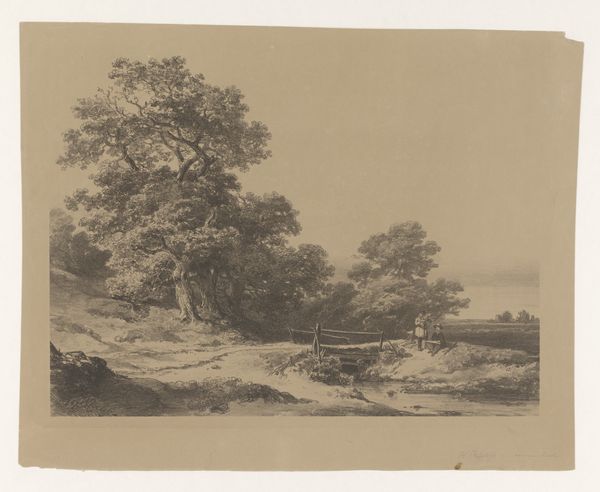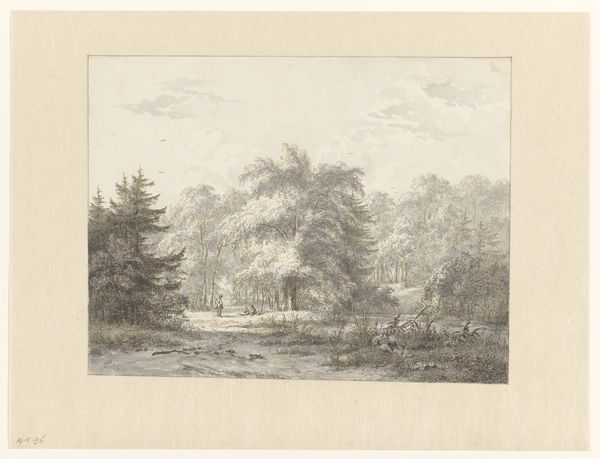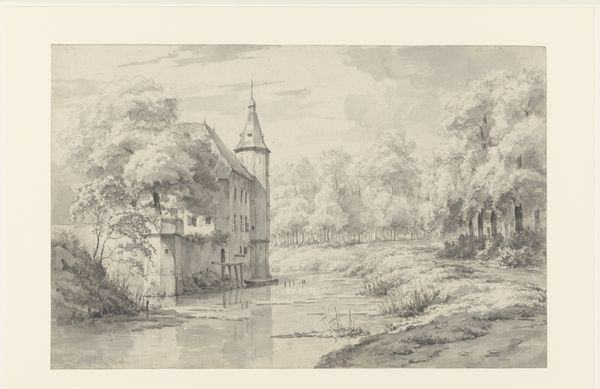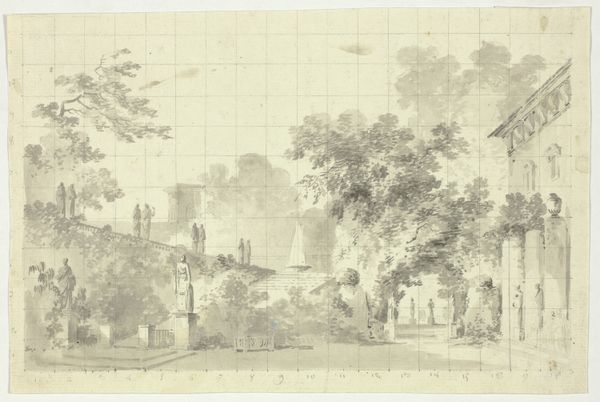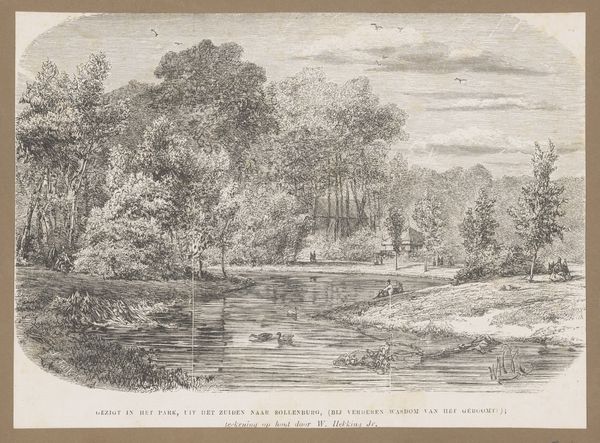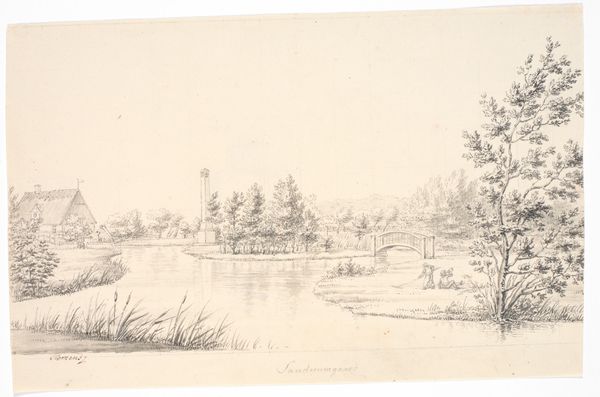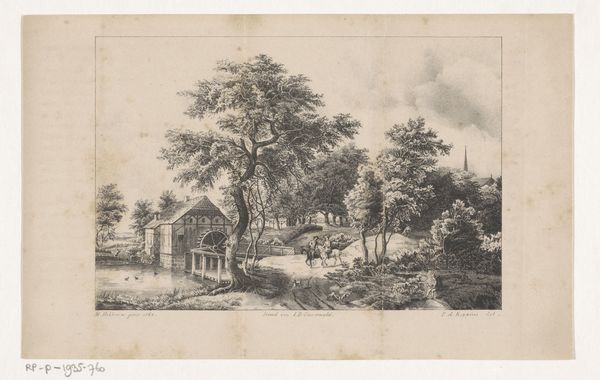
drawing, paper, ink, pencil, chalk, graphite, architecture
#
drawing
#
netherlandish
#
baroque
#
landscape
#
paper
#
ink
#
pencil drawing
#
pencil
#
chalk
#
graphite
#
14_17th-century
#
architecture
Copyright: Public Domain
Editor: Here we have *Schloss Kersbergen bei Zeist*, a drawing by Roelant Roghman. It’s done with chalk, graphite, pencil and ink on paper, and it strikes me as quite serene, almost melancholic, despite depicting a substantial building. What do you make of it? Curator: The Dutch Baroque era witnessed a surge in landscape art, reflecting a burgeoning sense of national identity and pride in the meticulously cultivated Dutch landscape. Artists were commissioned by wealthy patrons, and occasionally by the state, to chronicle castles such as Kersbergen, reinforcing a social order. Do you think this piece acts as a record, an assertion of land ownership? Editor: It feels too understated to be purely an assertion of power. The delicate rendering of the foliage, the almost hazy quality of the light – it softens any potential grandstanding. Maybe it's meant for a private collection? Curator: That's a good point. Consider the economics of artistic production at the time. Who were the patrons of landscape drawings? What were they attempting to communicate with their purchases? This image acts as more than a depiction of Kersbergen, what aspects do you notice that indicate its intended audience? Editor: The size, perhaps? It’s a drawing, not a large painting destined for a public space. Also, the level of detail – the artist seems to be inviting us into a closer, more intimate engagement with the scene. Maybe a personal reflection? Curator: Precisely. Drawings were often collected in albums, cherished for their detail and artistic virtuosity. So, this wasn't just about showcasing a building, it was about personal appreciation, or, to frame it differently, cultural and private consolidation of an imagined view. Do you see how these drawings, and their appreciation, shape our understanding of history? Editor: Absolutely. It shows that art always exists within a specific cultural context. Even a seemingly simple landscape drawing participates in broader social and political narratives. I hadn't quite appreciated that before. Curator: Indeed. This piece showcases how even seemingly passive depictions of the landscape and architecture reveal so much about cultural values, power structures, and even personal narratives.
Comments
No comments
Be the first to comment and join the conversation on the ultimate creative platform.
